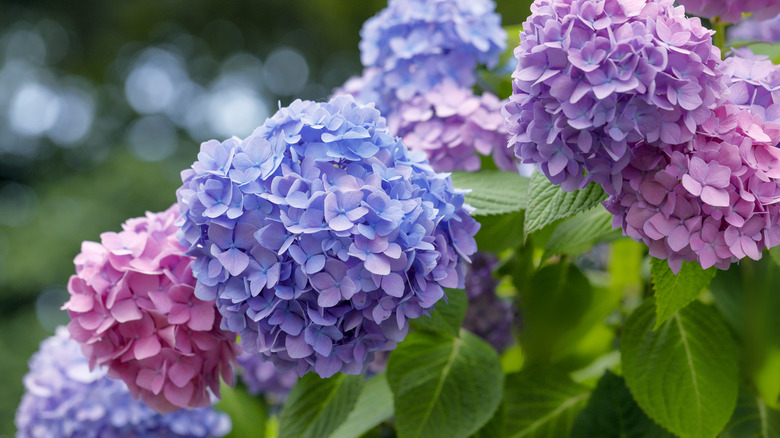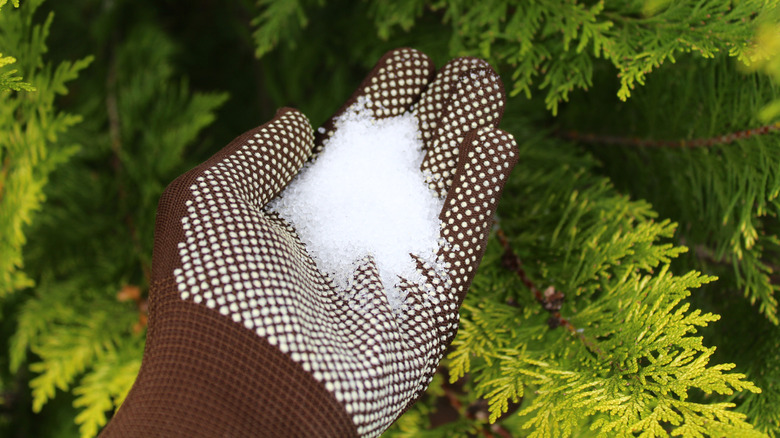Is Epsom Salt The Secret To Thriving Hydrangeas?
There's nothing more beautiful to look at than a flourishing hydrangea plant in a blooming garden. Incorporating the Hydrangea family (Hydrangeaceae) in a backyard is a wonderful choice. They offer big, beautiful bursts of color and are a pretty hardy shrub, meaning that as long as you take care of hydrangeas properly, then they should continue to thrive for a long time to come, getting bigger and more voluminous year after year.
There are lots of gardening tips and tricks for successful hydrangea blooms, but have you heard about the benefits of using Epsom salt? Might sound strange, but it's true. It is a simple trick to make sure your hydrangeas thrive, especially if your soil has a magnesium deficiency.
There are lots of smart ways to use Epsom salt around the house as well as in the garden. Epsom salt, otherwise known as magnesium sulfate, is a natural fertilizer that benefits herbs and vegetables. The mineral helps ensure a healthy production of chlorophyll required for photosynthesis, as well as phosphorus and nitrogen uptake from the soil. It is also widely known for being used in the health and beauty industry; however, it is also beneficial for keen gardeners, as it can improve the overall health of many different varieties of plants, including hydrangeas.
Why and how to use epsom salt on your hydrangeas
First things first, when should you consider using Epsom salt on your hydrangeas? This is only really necessary if your soil has a magnesium deficiency. The key symptom of your hydrangea being deficient in magnesium is yellowing leaves and general poor health. There are lots of possible causes, so don't feel guilty thinking it's entirely your fault. These causes include heavy rainfall, a low soil pH level, and infrequent fertilization.
This issue can be reversed by using Epsom salt to increase the magnesium levels in your soil, which will make your hydrangeas much more likely to thrive. All you need to do is mix 1 tablespoon of Epsom salt into your everyday watering can, or add 1 tablespoon per gallon of water to a tank sprayer. One watering can should be sufficient for 9 square feet of garden space. It's recommended to use this mixture to water the soil around your hydrangea plant every 2 to 4 weeks, steering clear of the plant's leaves when spraying to avoid leaf scorch. You should also begin to see an improvement within this time frame.
One thing you should be aware of when it comes to using Epsom salt on your hydrangeas is that it can potentially harm other plants that are planted near your hydrangeas. Because the Epsom salt will change the pH level of your soil, this can potentially disrupt the health of your flower bed and affect other plants in negative ways. To avoid this, take extra precautions and consider using a professional soil test first to determine if this is, in fact, the genuine deficiency your hydrangeas are facing.

